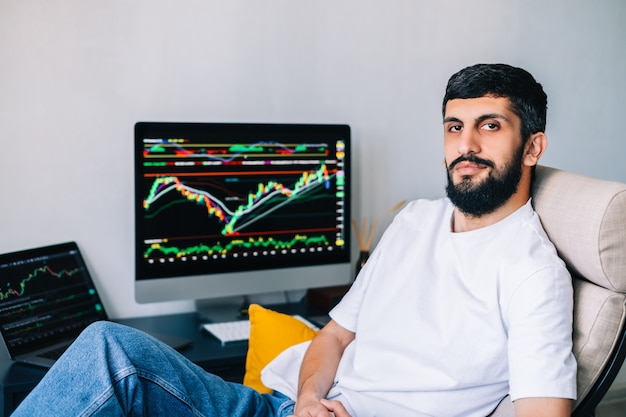Entering the world of trading can feel like stepping into a complex labyrinth of numbers, charts, and high-stakes decisions. For beginners, the path is often riddled with uncertainty and overwhelming jargon.
This is where simulated trading comes into play—a powerful tool that allows you to dip your toes into the market without risking real money. By creating a risk-free environment to practice strategies, test theories, and hone your skills, simulated trading offers an accessible gateway to understanding the intricacies of buying and selling.
However, it’s not just a game; it’s a valuable learning experience that can significantly enhance your confidence and preparedness. In this article, well unravel the essentials of simulated trading, exploring everything you should know before embarking on this enlightening journey.
Whether you’re completely new to the finance world or seeking a fresh approach to familiar strategies, the insights contained here will lay the groundwork for your trading endeavors.
Benefits of Simulated Trading

Simulated trading presents a myriad of advantages for beginners stepping into the intricate world of finance. Firstly, it offers a risk-free environment, allowing aspiring traders to experiment with various strategies without the looming fear of real monetary loss.
This hands-on practice cultivates confidence and enhances decision-making skills, crucial elements for success in actual trading scenarios. Moreover, simulated trading allows individuals to familiarize themselves with trading platforms and market dynamics, including tools like the DOM chart, which provides real-time insights into price levels and order flow. Engaging with such tools promotes a smoother transition into live trading.
As users interact with market data and simulate trades, they can refine their analytical abilities and intuition. Ultimately, this unique practice serves as a valuable educational tool, empowering beginners to develop a solid foundation and sharpen their skills before venturing into the fast-paced world of trading with real stakes.
Risk Management in Simulated Trading

Risk management in simulated trading is a crucial element that can make or break your trading experience. As you step into the virtual arena, you must understand that successful trading isnt just about making profits; it’s also about protecting your capital.
Begin by setting clear risk limits for each trade, deciding in advance how much of your simulated portfolio youre willing to stake. This could be as conservative as 1-2% per trade.
Moreover, employ strategies like stop-loss orders to prevent catastrophic losses and ensure your emotional responses don’t skew your decision-making. Remember, the goal of simulated trading is not only to hone your skills but also to cultivate a disciplined mindset.
Prioritize learning from your mistakes—analyzing trades that went awry can offer insights and help nurture a strategic approach. Balancing ambition with caution in your virtual experiments will lay a solid foundation for real-world trading challenges ahead.
Improving Decision-Making in Simulated Trading

Improving decision-making in simulated trading is a pivotal aspect that can greatly influence a traders success. In the vibrant world of financial markets, where every tick of the clock can change fortunes, honing your analytical skills is essential.
Simulated trading environments offer a unique playground. Here, you can encounter various market scenarios without the real-world risks; you can test strategies, analyze outcomes, and adjust your approach—all while operating within the safety net of virtual assets.
Imagine experimenting with aggressive trading tactics one day, and opting for a more conservative approach the next. This fluid adaptability allows for a deeper understanding of market dynamics and personal risk tolerance.
Ultimately, the repetitive practice and reflection on your choices in simulation forge stronger instincts and more informed judgment, preparing you for the unpredictable dance of actual trading.
Conclusion
In conclusion, simulated trading offers an invaluable opportunity for beginners to learn the complexities of the financial markets without risking real capital. By utilizing tools such as the DOM chart, traders can gain insights into market depth and order flow, enhancing their decision-making skills in a risk-free environment.
As you embark on your trading journey, remember to approach simulated trading with the same seriousness and discipline as real trading. With practice, patience, and the right resources, you can build a solid foundation that will prepare you for future success in the trading arena.
Embrace the learning process, and watch as your confidence and competence grow.

